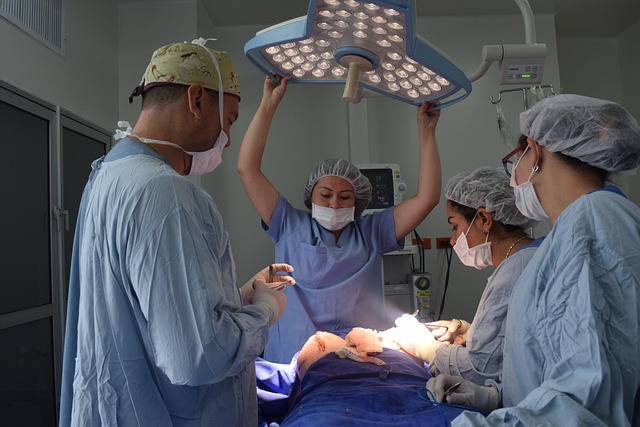Abdominoplasty Guide: What to Expect from a Tummy Tuck
Considering a tummy tuck (abdominoplasty)? This comprehensive overview explains who benefits most, the risks involved, how to prepare, typical recovery timelines, and expected costs. Learn practical pre- and post-op tips, realistic outcomes, and financing considerations to decide if a tummy tuck is right for you.

Who is an ideal candidate for a tummy tuck?
A tummy tuck, or abdominoplasty, is best suited for people who are generally healthy, have maintained a stable weight, and hold realistic expectations about surgical outcomes. The procedure targets excess skin and fat in the midsection and repairs weakened or separated abdominal muscles. Common candidates include individuals who have loose or sagging skin after pregnancy, people who have lost a significant amount of weight, and those whose abdominal contours do not respond to diet and exercise.
It is important to emphasize that a tummy tuck is not a method for weight loss. The most successful results occur in patients who are at or very close to their ideal weight and who plan to maintain that weight after surgery.
Risks and potential complications of abdominoplasty
As with any major operation, abdominoplasty carries risks. Typical complications to be aware of include:
- Infection and bleeding
- Blood clots (deep vein thrombosis or pulmonary embolism)
- Poor wound healing or widening of scars
- Changes in skin sensation, such as numbness or tingling, which can be temporary or permanent
- Seroma (fluid collection under the skin)
- Unsatisfactory cosmetic results that may require revision surgery
- Adverse reactions to anesthesia
Discussing your medical history, current medications, and any prior surgeries with a board-certified plastic surgeon will help identify and minimize potential risks. Proper post-operative care and following your surgeon’s instructions closely reduce the chance of complications.
How to prepare for a tummy tuck
Preparation should begin several weeks before your scheduled procedure. Key steps typically include:
- Stop smoking well in advance of surgery, as nicotine impairs circulation and slows healing.
- Discontinue certain medications and herbal supplements that increase bleeding risk; your surgeon will provide a specific list.
- Achieve and maintain a stable weight through a balanced diet and consistent exercise.
- Arrange for transportation home after the procedure and for someone to assist during the initial recovery period.
- Prepare your home recovery area with comfortable seating, pillows, easy-to-reach essentials, and any supplies your surgeon recommends (incision care materials, loose clothing, prescribed medications).
Preoperative visits may include medical evaluations, blood work, and photographs. Clear communication with your surgical team about expectations, timeline, and potential outcomes is essential.
What to expect during recovery
Recovery from a tummy tuck is gradual and varies by individual and the extent of the procedure. Immediately after surgery you should expect swelling, bruising, and discomfort around the abdomen. Many patients can resume light daily activities within two to three weeks, but complete healing often takes six weeks or longer.
During recovery, patients are generally advised to:
- Wear compression garments to reduce swelling and support the abdominal tissues.
- Avoid heavy lifting, strenuous exercise, and activities that strain the core muscles for the period specified by the surgeon.
- Follow instructions for wound care and take prescribed medications to manage pain and reduce infection risk.
- Attend scheduled follow-up appointments so the surgeon can monitor healing and address any concerns early.
Some loss of sensation around the incision and treated area is common and often improves over months, though some changes may be permanent. Emotional adjustments and patience are important; final contour and scar maturation can continue to improve for many months after surgery.
How much does a tummy tuck typically cost?
Costs vary widely depending on surgeon experience, geographic location, facility fees, anesthesia, and the complexity of the procedure. Below is a general range reported by reputable organizations:
| Provider | Location | Average Cost Range |
|---|---|---|
| American Society of Plastic Surgeons | United States | $6,000 - $8,000 |
| The Aesthetic Society | United States | $8,000 - $12,000 |
| Royal College of Surgeons | United Kingdom | £4,500 - £6,000 |
| Australian Society of Plastic Surgeons | Australia | AUD 6,000 - AUD 15,000 |
Prices, rates, or cost estimates mentioned are based on the latest available information but may change over time. Independent research is advised before making financial decisions.
Keep in mind that published figures commonly reflect only the surgeon’s fee. Additional expenses may include anesthesia, operating facility fees, pre-op testing, compression garments, and any required medications. Many practices offer financing plans or payment options to help manage the expense.
Making an informed decision
A successful tummy tuck starts with clear goals and realistic expectations. Choose a board-certified plastic surgeon with experience in abdominoplasty, review before-and-after photos, and ask about patient testimonials, complication rates, and revision policies. Be open about your medical history, lifestyle (including smoking), and future plans such as pregnancy, which can affect long-term results.
When weighing the benefits and risks, consider both the physical and emotional aspects of recovery. Many patients report improved body contour, firmer abdominal muscles, and greater confidence after surgery, but it requires time, patience, and commitment to post-operative care.
This article is for informational purposes only and should not be considered medical advice. Please consult a qualified healthcare professional for personalized guidance and treatment.






